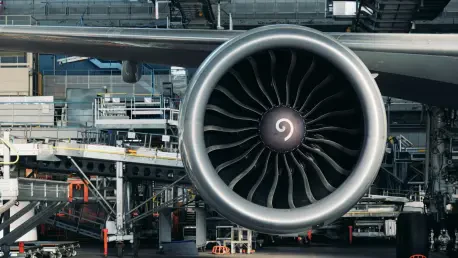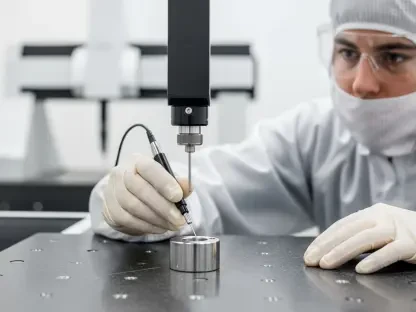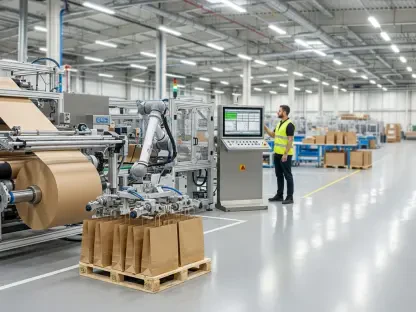Data and digital tools play an increasingly vital role in enhancing quality and safety within aerospace manufacturing. This industry has stringent standards and a zero-tolerance policy for errors due to the critical nature of its components. Ensuring performance, manufacturing precision, and strict adherence to certification standards is imperative for airworthiness. Achieving this level of consistency is challenging, primarily because of the complexity of global supply chains and a dynamic workforce, both of which introduce numerous opportunities for deviation. Addressing these challenges necessitates adopting advanced technologies aimed at maintaining utmost precision and reliability.
The Financial Impact of Quality-Related Processes
The financial burden of quality-related processes in aerospace manufacturing is substantial. Costs associated with ensuring quality, such as rework, scrap, supply chain disruptions, and comprehensive inspections, can account for up to 30% of the total manufacturing expenses. This significant financial impact underlines the necessity of shifting from reactive to proactive quality management. Proactive strategies aim at identifying and addressing potential issues before they escalate, thereby reducing costs and improving efficiency.
By transitioning to a proactive approach, aerospace manufacturers can leverage technology to anticipate problems rather than merely responding to them after they occur. Implementing digital tools for inspection processes, intelligent data supervision, and advanced analytical techniques helps make proactive strategies viable. This shift requires new technologies and workflows, emphasizing the need for modernization in the industry. Aziz Tahiri, VP of Global Aerospace & Defense at Hexagon, points out that this transformation is crucial for reducing manufacturing costs and enhancing efficiency. Automating data collection and incorporating intelligent supervision can significantly diminish the costs associated with fixing errors post-production.
The Importance of Accurate and Timely Data
Accurate and timely data are fundamental to maintaining high-quality standards in aerospace manufacturing. Data must be contextualized with various details such as who operated the machinery, the calibration status of equipment, and the environmental conditions during production. This context is essential for evaluating parts or processes accurately. Capturing data at the right time, especially through in-process inspections at various manufacturing milestones, allows teams to identify issues closer to their source. This approach simplifies the task of pinpointing root causes and facilitates timely resolutions, thus preventing defects from propagating.
The erosion of data quality can lead to significant detriments in manufacturing outcomes. Ensuring the integrity and precision of data throughout the production process is crucial for adhering to the stringent standards of the aerospace industry. Improved interpretation and usage of such data are necessary to drive high-value decision-making. As manufacturing processes become increasingly complex, leveraging accurate data becomes paramount to mitigate risks and enhance quality. Consistent monitoring and analysis of data allow manufacturers to maintain the integrity and reliability of their outputs, which is central to aerospace industry requirements.
The Role of Simulation Tools
Simulation tools significantly contribute to the proactive quality management approach by providing a virtual environment to test various scenarios without interrupting the actual production process. These tools enable engineers to simulate adjustments in machine programming or alterations in part fixturing that could potentially improve manufacturing outcomes. High-fidelity simulations can predict outcomes with up to 99% accuracy, instilling confidence that virtual fixes initiated will be effective when applied in real-world settings.
The practical applications of simulation tools extend beyond simple testing. They offer a platform where theoretical adjustments can be validated preemptively, ensuring that interventions are grounded in empirical evidence. This predictive ability reduces the likelihood of errors, optimizes manufacturing processes, and conserves resources. Furthermore, the ability to run multiple scenarios quickly allows for the fine-tuning of production workflows, enhancing both efficiency and quality. This increased accuracy and planning capability ensures that production processes remain within the exacting standards required in aerospace manufacturing.
Leveraging AI and Machine Learning
Artificial intelligence and machine learning (AI/ML) are integral in pushing the boundaries of aerospace manufacturing quality. These technologies assist in analyzing vast datasets at unprecedented speeds, identifying patterns, and recommending solutions that might not be immediately apparent to human analysts. This rapid analysis helps spot potential issues early on, enabling quicker responses that keep production processes running smoothly and efficiently.
AI/ML technologies also play a crucial role in continuous improvement. By learning from previous data, these systems can optimize workflows and predict future challenges, adapting manufacturing processes proactively. The iterative nature of AI-driven insights ensures that the production environment is continually refined and optimized for quality. Furthermore, embedding AI in the decision-making process enhances the precision and reliability of manufacturing outcomes. The ability to adapt and learn from evolving data sets positions AI/ML as a cornerstone technology in advancing aerospace manufacturing quality.
Industrial Internet of Things and Cloud Platforms
The Industrial Internet of Things (IIoT) and cloud platforms are revolutionizing data sharing and collaboration across departments within aerospace manufacturing. These technologies enhance traceability and enable seamless coordination by ensuring that all relevant data is accessible in real-time. IIoT connects various devices and systems across the production floor, facilitating an integrated data ecosystem that promotes transparency and collaboration.
Cloud platforms complement this by providing secure and scalable storage solutions, ensuring data is available to all stakeholders whenever needed. This connectivity accelerates the identification and rectification of issues, promoting a more responsive production environment. The ability to share data effortlessly across departments means that teams can collaborate more effectively, leveraging shared insights to improve manufacturing outcomes. This holistic approach, supported by IIoT and cloud platforms, ensures that quality control is embedded throughout the production lifecycle.
The Importance of Automation
Automation is a cornerstone for achieving efficiency and maintaining high standards in aerospace manufacturing. It speeds up repetitive inspection tasks and enforces the feedback loop between digital design and physical manufacturing. Automation ensures that the gap between design intent and the manufactured part is minimized, which is critical for optimizing productivity and quality.
Implementing automation technologies in inspection processes reduces the chances of human error, increases consistency, and ensures that inspections are thorough and precise. Automated systems can handle large volumes of data at high speeds, providing timely insights that are crucial for maintaining production quality. This accelerated feedback loop ensures that any deviations from design specifications are promptly addressed, keeping the manufacturing process aligned with the intended design standards. By streamlining these processes, automation plays a vital role in maintaining the stringent quality requirements inherent to aerospace manufacturing.
Integrating Data Across the Production Lifecycle
The integration of data across the entire production lifecycle is imperative in modern aerospace manufacturing. Connecting every stage of production, from simulation to manufacturing and quality control, ensures a seamless flow of information. When data is accessible and shared in real time across different functions, it unifies the entire production lifecycle, fostering consistency and precision in manufacturing outputs.
Hexagon’s Nexus digital reality platform exemplifies this integration, connecting teams, tools, and workflows throughout the manufacturing chain. This connectivity allows for early detection of deviations, faster decision-making, and embedding quality at every production step. A unified data platform enhances overall operational efficiency, ensuring that quality assurance is an integral part of the production process rather than an afterthought. The comprehensive use of data streamlines production, accelerates innovation, and mitigates risks, making it a crucial component in modern aerospace manufacturing.
Embedding Quality for Life
Data and digital tools are growing increasingly crucial in improving quality and safety in aerospace manufacturing. This industry operates under rigorous standards, with a zero-tolerance policy for mistakes due to the critical importance of its components. Ensuring high performance, precise manufacturing, and strict adherence to certification standards is essential for maintaining airworthiness. Achieving consistent results is particularly challenging due to the complexity of global supply chains and a dynamic workforce, both of which can lead to deviations. To overcome these challenges, the adoption of advanced technologies is essential. These technologies are designed to ensure the utmost precision and reliability, making it possible to meet the demanding requirements of the aerospace industry. For instance, the integration of artificial intelligence, augmented reality, and blockchain technology can enhance tracking, verification, and production processes. These tools help monitor and manage every stage of manufacturing, ensuring each component meets the stringent standards required for safe and reliable operation within aerospace.









